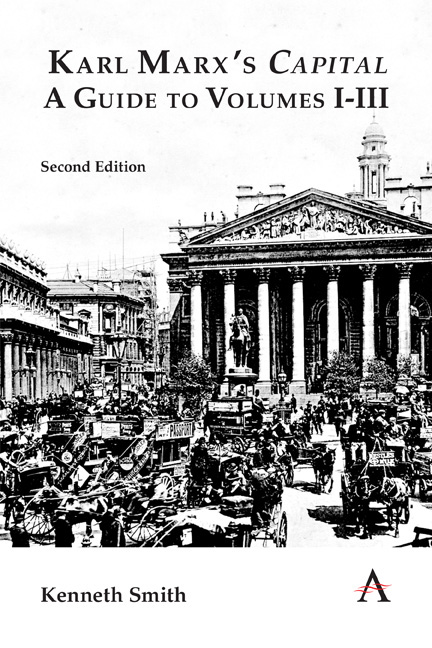Book contents
- Frontmatter
- Dedication
- Contents
- Preface to the Second Edition
- Introduction
- Part I The Development of the Capitalist Mode of Production
- Part II The Capitalist Mode of Production
- Part III The Underdevelopment of the Capitalist Mode of Production
- Part IV The Value Theory of Labour
- Conclusion to Part IV
- Conclusion
- Appendix: On Social Classes
- Notes
- Bibliography
- Index
10 - Mercantilism and the Circuit of Industrial Capital in Capital, Vol. II, Part I, Ch. 1–4
Published online by Cambridge University Press: 17 April 2021
- Frontmatter
- Dedication
- Contents
- Preface to the Second Edition
- Introduction
- Part I The Development of the Capitalist Mode of Production
- Part II The Capitalist Mode of Production
- Part III The Underdevelopment of the Capitalist Mode of Production
- Part IV The Value Theory of Labour
- Conclusion to Part IV
- Conclusion
- Appendix: On Social Classes
- Notes
- Bibliography
- Index
Summary
Marx discusses the circulation of merchant's capital in all three volumes of Capital, as follows: in Vol. I, Part II, Chapters 4 and 5, the first two chapters of the part, entitled ‘The Transformation of Money into Capital’ (1974a, 145–63 [1976, 247–69]); in Vol. II, Part I, Chapter 1–4, in the section entitled ‘The Metamorphoses of Capital and Their Circuits’ (1974b, 25–123 [1978, 109–99]); and in Vol. III, Parts IV and V (1977, 267–613 [1981, 379–748]), but especially Chapter 20, entitled ‘Historical Facts about Merchant's Capital’ (1977, 323–37 [1981, 440–55]). However, since Marx's Vol. III discussion of merchant's capital is almost entirely descriptive while his Vol. I discussion is entirely concerned with a highly abstract distinction between the simple circulation of commodity capital (C–M–C), merchant's capital (M–C–M), and money-dealing capital, M–M (where ‘C’ stands for commodity capital, and ‘M’ stands for money capital), what we will mainly be concerned with here is Marx's detailed discussion of the circulation of what he calls ‘the more highly developed forms of merchant's capital’, in Vol. II.
Marx devotes one chapter each at the beginning of Vol. II to the circuit of money capital (M–C…P…C’–M’), the circuit of productive capital (P…C’– M’–C…P’) and the circuit of commodity capital (C–M’–C…P…C’) and then summarizes his argument in the fourth chapter of Capital, Vol. II (1974b, 25-123 [1978, 109–99]) where he describes these three circuits of capital as the more highly developed forms of the simple circuit of money capital (M–C–M) and commodity capital (C–M–C). Marx says that these three circuits are more highly developed precisely because in each of these circuits the process of production (P) is included to show that a production process is an integral part of the circulation of capital in all three cases. The expressions M’, C’ and P’ are then used to indicate where the value of money, commodity and productive capital have been augmented. In M–C…P…C’–M’ the process of production is seen to intervene midway between the two phases of what would otherwise be the normal circulation of money capital, with the value of the commodity capital being augmented by the production process as shown at C’ and M’.
- Type
- Chapter
- Information
- Karl Marx's 'Capital': A Guide to Volumes I-III , pp. 86 - 90Publisher: Anthem PressPrint publication year: 2021



